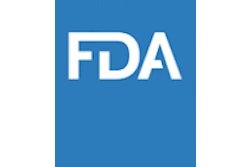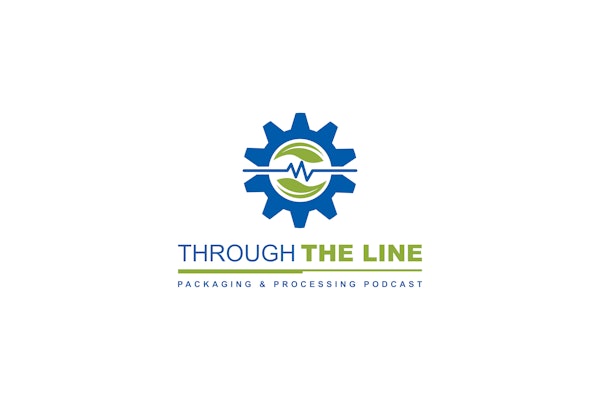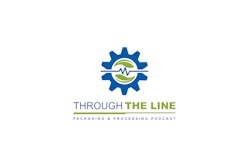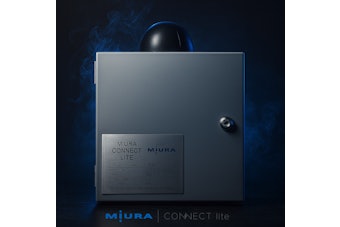This episode of unPACKed with PMMI takes a dive into the world of raw food processing and in particular raw pet foods with raw pet food pioneer Steve's Real Foods. Nicole Lindsley is the owner of Steve’s Real Foods and discusses how the food safety modernization act (FSMA) changed the game for raw pet food processing. After spending two years evaluating its food safety program Steve's Real Food decided high pressure processing was the best way to meet FSMA requirements but they also found that the added shelf life made it possible for Steve’s to grow into a company with distribution in many different international markets let's get raw.
To subscribe, rate, review and find more unPACKED podcast episodes, visit pmmi.org/podcast or find us on Apple podcasts, Spotify or iHeart Radio.
 | Read the full transcript below. |
Sean Riley:
And with all the fancy introductions out of the way, welcome to the podcast, Nicole Lindsley.
Nicole Lindsley:
Thanks for having me.
Sean Riley:
Oh, the pleasure is definitely all ours. Believe me. So this is actually a very interesting company that you're currently the CEO of. And I guess to kind of get us started I'm familiar with the name, I know Steve's Real Food and I know that you guys are I guess, kind of pioneers in the whole raw pet food and making it convenient and stuff like that. So I guess if you could just kind of give us a background on that first.
Nicole Lindsley:
Yeah, yeah, absolutely. So Steve's Real Food has been around since 1998 and we were the first nationally distributed raw pet food on the market and kind of pioneered the way. And when we say pioneered, we mean like we had to educate the retailer, why raw pet food was so important and it worked so well for pets. And so our company is based on an education sales model. So we really go out and teach people about why raw pet food works, why whole living food is important, and why your customers or the retailers customers should be purchasing the food. And so we did that back in the 2000s and have been doing it since. And now we're now a multi-national distributed company in many different international markets with our frozen and freeze dried foods.
Sean Riley:
That's really cool. And this is just me asking this question, like I have a dog. I'm a pet owner and I've always been told not to, I'm cutting up steak for dinner or something like that, not to feed it to the dog. Like what am I doing? What's different?
Nicole Lindsley:
Yeah. Absolutely. So some people do feel that raw meat is going to have bacteria in it and you shouldn't feed that to your dog. We actually like to kind of bust that myth. Pets are able to handle certain amounts of bacteria. And so if you were to have a piece of chicken on your counter and you were going to cook it up for yourself and have a little trim that you're going to throw away, absolutely you can feed it to your pet. They're lower to the ground. And they're able to process that because even their digestive system is almost opposite of what ours is. And so the food sits in their stomach for a bit longer and it will naturally kill the bacteria before it even enters the intestine.
Nicole Lindsley:
So you feeding raw [inaudible 00:02:31] to your pets is perfectly fine. However, when you're handling it for yourself, clearly you can't eat it. And you need to be careful and make sure you wash your hands and the utensils and your cutting board. And so with raw pet food, this is why we don't have too big of a concern for bacteria for pets, but we do for humans. And so, that's why we've started using some processes such as HPP that help us make it safe for humans to handle and make them feel more comfortable feeding it.
Sean Riley:
See, that's interesting. And now I can go back and tell my wife that I've been fine all this time, because I'm not going to lie to you. Sometimes I do exactly that where I may have actually-
Nicole Lindsley:
You are perfectly, as long as you're washing your hands after you're perfectly fine.
Sean Riley:
I figured they're outside. They're rummaging around in the backyard, they're animals. Like there's going to be times that they come across things. They survived for thousands of years without us making them food. But we obviously got off track there. But I'm glad that you cleared that up for me so I least I got that out of this and can use that in my house from that one person listening. Anyway. Circling back. So something like high pressure processing, this is a podcast about that. So everybody knows sort of the ins and outs of it, but how is that something that would be utilized from a raw pet food perspective? Like just kind of give us why that's a benefit.
Nicole Lindsley:
Yeah. So, like I said, bacteria wasn't a problem for pets. And for the longest time, from about 1998 is when we started and from 1988 until about 2011, it wasn't an issue. And we didn't try to mitigate the bacteria because it wasn't a problem for pets. However, in 2011 is when the Food Safety Modernization Act was passed and that made it, so pet food was regulated by new governing bodies and we had new rules to follow. So we had to make sure that pet food did have no bacteria for pets or for humans. The pets again were perfectly fine, but humans needed to be able to handle it and not be concerned about the bacteria in it. And so that's why we implemented the high pressure processing. It was a decision we made after looking at I want to say about 10 other methods that could've been used to help mitigate bacteria.
Nicole Lindsley:
But after doing a full analysis on everything from cost to barriers of implementation to public perception, we decided high pressure processing was the best one to use. And that was mainly because it was so effective with so little effect on the food, meaning texture, palatability, color, and nutritional, it didn't affect the food any way nutritionally. And so we have started using it on all of our food from both the frozen and the free dried lines and have been able to have many different validation studies to prove that the bacteria is mitigated and it is safe to handle for humans. Now we do still encourage people to wash their hands. It's just good practice. But it is a safe product to use.
Sean Riley:
So that's really interesting. So again, most of this is for the human, not for the actually like, and I'm not negating the pet value of it. I'm saying, but most of this for the high pressure processing is for the handling by the humans and you guys basically, I'm kind of dumbing this down to repeat it back to you, is basically finding a way for the humans to handle it, but maintain all the nutrients and HPP was kind of the best way to do it.
Nicole Lindsley:
Absolutely. Yeah.
Sean Riley:
Interesting.
Nicole Lindsley:
It's all for the, and that's what the Food Safety Modernization Act was. It was,
Sean Riley:
Right. Right.
Nicole Lindsley:
It's governed by the FDA, not by USDA. So yeah, it's all for the humans, which we agree. We want to make sure that because people do handle pet food, dry pet food especially, and don't wash their hands after. And so we would hate to think that a human would do that for raw food as well, but they might and we want to make sure it's safe if they don't.
Sean Riley:
Right. Okay. Completely. So how about beyond Steve's, like how is HPP in terms of the pet food industry? Is it something other people are embracing? Is it something that is becoming more widespread? Are you guys ahead of the curve with that as well? Like what could you tell me about that?
Nicole Lindsley:
Yeah. So high pressure processing has been adopted by most fresh pet food companies. Clearly the nature of our ingredients, we're using fresh raw chicken, fresh raw produce. And so we need to be able to have something that can mitigate bacteria so we are in compliance. Kibble on the other hand, their process, their cooking process is going to kill off bacteria for the most part, but any fresh pet food company and that's even your lightly cooked foods, because there's a lot of foods out there now that they'll do kind of like a survey process on the meat, they still need to use an HPP process to become fully compliant with FSMA. So any fresh pet food out there is adopting or will be adopting HPP. A few of the smaller companies may be avoiding it because it is a very high cost process to implement. And so if you don't have the resources to do that, might be a little bit of a challenge, but if you are the larger companies with some financial backing, most people are making the decision to go that direction.
Sean Riley:
Now, how does it, you've kind of touched on it, but I guess I'm thinking because PMMI is so tied with packaging in general and processing in general, like how is HPP benefiting raw pet food for the pet food industry? Is it also going to help from a shelf life, extending shelf life point of view? Is that something that's just going to be strictly the packaging that's going to do that? What are other ways that it's kind of benefiting the raw pet food market?
Nicole Lindsley:
Yeah, so the shelf life has been extended for us. We found that we were able to, even after it's defrosted, it stays good longer. And then on the freeze dried process, we were able to extend our shelf life by about six months just because of that processing. And so yeah, absolutely. The shelf life has improved. So we don't put shelf life on our packaging other than a best buy date, but our best buy date is actually shorter than the actual shelf life because our shelf life is so long.
Sean Riley:
Sure.
Nicole Lindsley:
So, but in terms of packaging, what people do like to see is that it is a safer product and that they can feel confident feeding it because just like, you were mentioning your wife who naturally feels that they shouldn't be feeding their pet a raw food. Well, you can say that you've achieved zero bacteria in your food, then it can give a little bit more confidence to the broader public because most people do have that perception.
Sean Riley:
This goes to, because what I'm thinking with the raw pet food in general, we have a generation that's younger than me, but that's moving up that is more aware of health and benefits, the benefits of being healthy and health consciousness. And that is obviously being passed onto their pets. And there's more awareness of you're not just grabbing whatever pet food there is on sale and throwing it in the bowl. Like you're worried about your pet's health as well. So I'm trying to kind of tie that in my brain as well, with how this HPP being on the package and is there a way that that is helping to also market this to those people that are thinking, okay, I want to improve my dog's health. I want to give them something more natural. This is helping by extending the shelf life and keeping all the preservatives and the nutrients and things like that. So I guess that's where I was kind of thinking of that from that point of view.
Nicole Lindsley:
Yeah, absolutely. I mean, it allows us to keep our ingredient label clean and we don't have to use artificial preservatives. And the consumer doesn't think, oh, they're using HPP. So I feel better about it. It's more like you look at your ingredients and we're not adding any crazy chemicals to extend that shelf life.
Sean Riley:
Right. They don't need to understand how you kept it out. They just can see on there because you have to say what's in there that it has been kept out and that's kind of the end result, which is helping the consumer as well.
Nicole Lindsley:
Yep. Absolutely.
Sean Riley:
Very interesting. So I guess just to kind of wrap up like this is for the Cold Pressure Council. So how did Steve's pet foods, how did you guys get involved with CPC and how is it helping you with your HPP business?
Nicole Lindsley:
Yeah. So CPC has been a great resource for us. We got involved with them pretty much, as soon as we implemented the HPP process. They provide a lot of studies and data that has helped us not only in implementing HPP, but also, like I said, we're an education based company. And so we need to be able to have facts and data that we can share with retailers and pet parents so that they understand how HPP works and why it's effective and why it does not affect important things like probiotics, because that's a very big concern if you're talking to retailers or consumers and saying, oh, or we're killing all the bacteria in the food. Well, the first thing that a lot of consumers think is, well, what about the probiotics? And we've been able to work with the CPC and different members of the CPC that have helped us get the data we need and share it. And so, and that's one of the best things that I think that organization has helped us with, is just the openness and sharing of knowledge.
Sean Riley:
Very cool. And again, this is just, I'm thinking of it this whole time, like we're talking about pet food and we're talking about raw pet food, and these are all things that would apply to human food as well. And I just, this was super interesting to me and I can't thank you enough for taking time out of your day to come on, excuse me and kind of explain how this is benefiting pets. Now I can, again, in my own house, I have a victory that I can bring back and I'm sure other people listening to this who may have fed their pet some raw food, but yeah, that's very interesting. And I thank you again for taking time to come on here and talk about Steve's pet food.
Nicole Lindsley:
Yeah. Well, again, thank you for having me and appreciate you taking the time to talk.


















